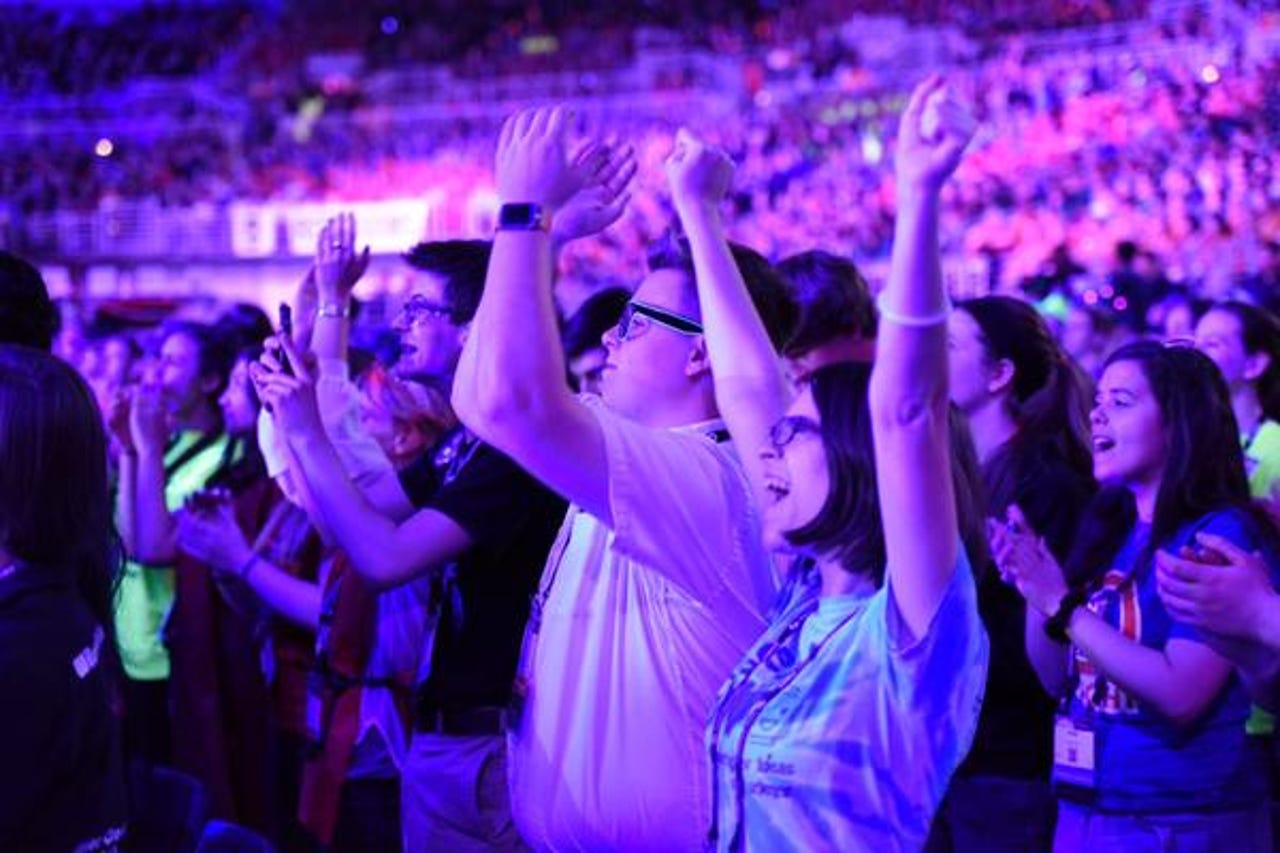Lessons from the world's largest robotics competition


A crowd of 40,000 at the FIRST Competition Championships.
Tens of thousands of roaring fans, intense competitors slugging it out, the sound of metal on metal. This, my friends, is what I'm talking about. Robotics competitions may sound nerdy, but they're coming of age as a new generation of schoolyard tinkerers, programmers, and problem solvers inherits a host of incredibly powerful engineering tools -- from 3D printers to ultra-cheap processors.
Last week, more than 20,000 students from 42 countries traveled to St. Louis to compete in the FIRST Robotics Competition Championship, the largest school-age robotics competition in the world.
The FIRST Competition is appealing because it combines the excitement and intensity of high school sports with the rigors of science and technology. It's another reason why I'd like to go back and do childhood over again.
Under strict rules, limited resources, and tight time limits, teams are challenged to fund-raise, design a brand, and build and program robots to perform tasks against competitors. In this year's game, FIRST STRONGHOLD, Alliances worked together to breach opponents' fortifications, weaken their tower, and capture the opposing tower. Robots scored points by breaching opponents' defenses and tossing boulders through goals in the opposing tower. During the final 20 seconds of the match, robots were allowed to surround and scale the opposing tower to capture it.
Teams try to breach a competitor's defenses.
The four-day event came down to a heart-pounding conclusion Saturday night in front of a roaring crowd of more than 40,000 when four teams won the coveted FIRST Robotics Competition Championship Winning Alliance.
"It's rare to see this type of energy and commitment from high schoolers," says Aaron Pickering, a spokesperson for FIRST, "but it's critical at a time when STEM [science, tech, engineering, math] occupations are growing 1.7 times faster than non-STEM careers in the U.S., yet there's not enough talent entering the field."
A stroll through the competition makes it clear just how talented some of these kids are.
A team hefting their control system at the FIRST Championships in St. Louis.
"There's an amazing all-girls team that I just met who is rocking it; a girl who has been inspired to major in engineering at Purdue next year after overcoming depression thanks to FIRST; and an underprivileged team from south central LA who helped design their new high school building."
White House Chief Technology Officer Megan Smith spent a day at the competition last week meeting kids. She also gave the keynote address.
FIRST is an NGO founded by inventor Dean Kamen in 1989 to inspire an appreciation of science and technology in young people. Based in Manchester, N.H., the organization designs programs that motivate young people to pursue opportunities in science, technology, and engineering. FIRST is supported by over 200 of the Fortune 500.